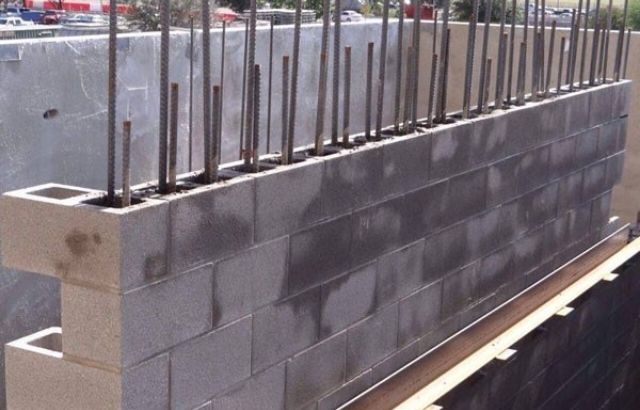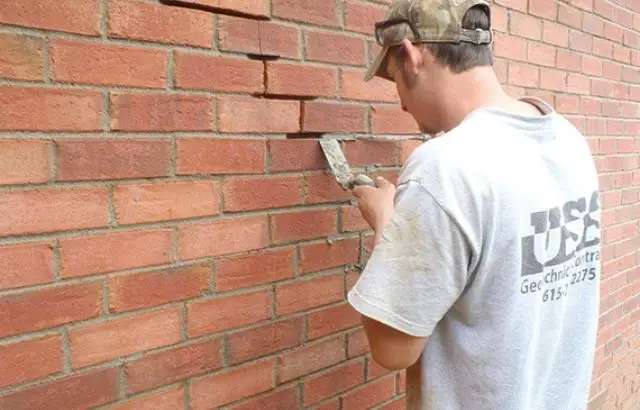Regardless of how you identify the blocks you used when building your house walls, remember that they are permeable. That is, it makes no difference whether you know them as cement blocks or concrete blocks. They are still blocks. This condition of your block wall allows outside air to enter through its pores into the house. In this guide, I will tell you how to insulate a cinder blockhouse.
The situation will become more uncomfortable if the blocks have cracks or crevices on the inside. This air passage from the exterior walls or windows to the interior does not favor the house’s habitat. It does not matter what time of the year it is because the interior will still be affected. If this is your case, you should look for solutions, and the best one is insulating concrete walls above grade.
For this, there are several ways to separate the blocks. For example, you can make insulating cinder block walls above grade. This is how we discuss how to insulate a cinder block house and avoid discomfort in the home. In this regard, select the option that you think is most suitable for you.
According to the conditions of the wall, check whether the blocks are coated or not. It is also, depending on whether the wall on its upper side is exhibited, influences the manner of its insulation.
Insulation Options
The alternative for making insulation comprises:
- Spray foam insulation. Learn to get spray foam insulation off hands.
- Injection foam insulation
- Polystyrene beads
- Foamboard
- Loose-fill masonry insulation
The choice between these options will depend on the sheathing the walls have or if the area above is clear. This type of situation is commonly seen in new buildings or renovations.
Now, let’s specify the use of each insulation process;
How to Insulate Cinder Block House
Spray foam insulation for concrete block walls
This is a technique suggested to be applied before the drywall is put in place during construction also, before the supports have been plastered in half a quarter inch and half an inch. As the walls are splashed, the foam insulation remains retained behind the backing avoiding any thermal bridging.
Thermal bridging is a building zone with heat propagation relevantly higher than adjacent materials. This results in a total drop in thermal insulation if your concern is only to stop thermal bridging. If you do not care about your walls’ spatter appearance, you will not need gypsum boards.
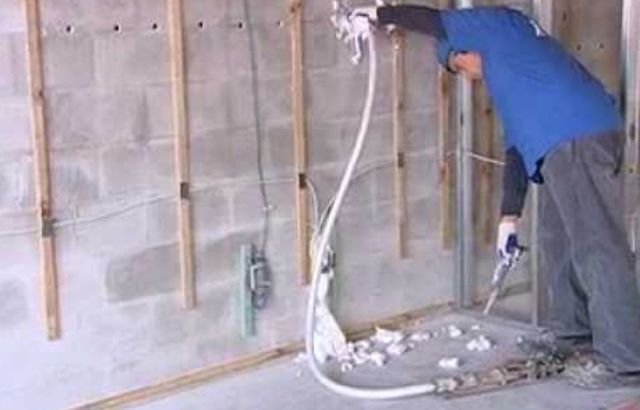
Injection foam insulation
We proceed by drilling holes in the center of the wall to fill existing concrete blocks, specifically in the voids that remain clear, by arranging the concrete blocks’ centers. A great advantage of applying this technique is that it will completely cover the voids.
It will also cover the cracks, making it one of the best alternatives for insulation. This is because the foam occupies all the openings and angles, throwing towards the centers. In this way, it produces an air seal that will stop the air.
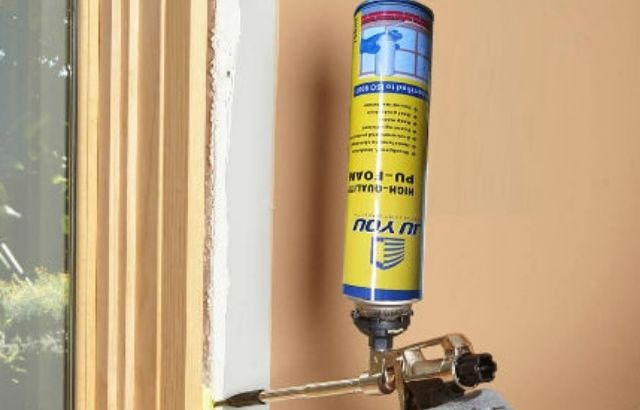
Polystyrene beads
This technique is normally used when the wall is uncovered at the top. This is because the polystyrene beads are poured over the block voids from above. Therefore, the polystyrene beads will already be placed in the concrete walls from the moment the house is built.
However, this material has a drawback. At the moment, the blocks need to be trimmed. The polystyrene beads will sprout in large quantities.
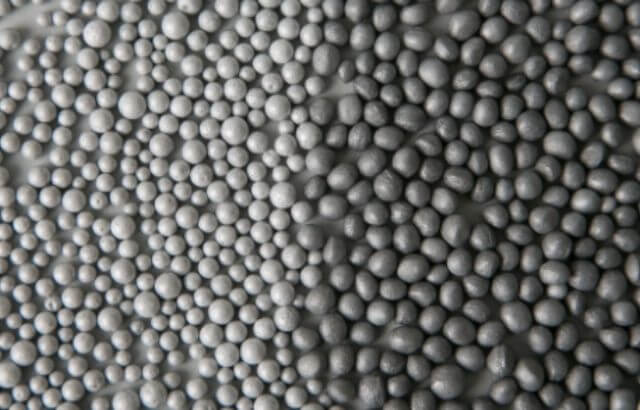
Foam boards
Use special glue for this type of material on the top of the foam board. Use a knife or caulking gun for this purpose. Here you must ensure that the openings in the contours of the board are completely sealed. Otherwise, it will contribute to mold and mildew formation because the wall will experience two temperatures.
All of these factors will be caused by condensation problems. To close the seams, use tape or mastic and slow down the movement of air.
Loose-fill masonry insulation
This procedure involves embedding the walls of concrete blocks with sand-like material. If the concrete blocks are open at the top, this is the correct option. In the same way as polystyrene beads, the dust would spread when you need to trim the insulation blocks.
Using this material presents another difficulty. It isn’t easy to verify that the voids are filled because you are working from above. So, in this case, the airflow would be allowed.
Blocks in old buildings
You need to know something that walls built with thick blocks, stone, adobe, and brick. According to the International Energy Conservation Code (IECC), these materials must have at least R-10.
This is what happens with most old buildings that do not have the correct R-value. Their walls are lacking insulation. Therefore, the solution is to increase this value.
In these cases, InSoFast foam panels are the most recommended. This is where the practice of insulation has been used for decades to increase comfort. This type of insulation consists of covering the inside of the exterior walls with foam panels.
Although buildings are indeed famous for their structures, it is also true that their R-value is low. They have endured for centuries but do not reach the required R-value.
With InSoFast panels, the R-value will increase to R-13, a considerable and desirable value compared to the IECC. In other words, it will give a favorable turn around giving the desired comfort.
Room walls
When planning to live in the space of a room should also think about insulating the block wall. In this case, the solution is to raise the wall using furring bars. When this is done, the insulation is applied.
This procedure is similar to framing a model wall. However, it has an exception in terms of the wall supports. This is because the brackets commonly mate flat for the length of the wall.
Standard two-by-four brackets will provide spaces to brackets 1.5 inches thick. These spaces are then trimmed, and rigid foam insulation is put in. This makes the work more tedious compared to installing rigid foam sheeting.
However, working in this way makes it possible to mount drywall on top of the wall studs. This will give you a finished look.
How to Insulate Cinder Block House: FAQs
How do you insulate a cinder block wall?
There are many options, and each will rely on where the wall is. Additionally, it will rely on whether you use it to inner or exterior walls. These types of insulation come in expandable foam, injection urethane, polystyrene pellets, foam boards, and loose-fill brick varieties.
Our concrete block walls energy efficient?
They are if we insulate them to prevent air movement into the interior. Their energy efficiency will depend on proper insulation. Otherwise, they cannot be efficient.
Are our concrete block houses warm?
Yes, they usually are, regardless of the season. For this reason, insulated concrete block walls are made above ground level. They are also often framing a basement wall against concrete or insulate basement walls.
Remember that concrete blocks create a beneficial and firmly configured wall. However, their thermal resistance is low, so you must decrease air penetration. To conserve internal temperature, you must avoid external air. This can seep through the grooves of the brick or block if the wall is fixed or displaced.
For this reason, it is necessary to make repairs to the joints and seal them to keep air out. On the other hand, you can increase the thermal resistance rating in interior walls such as those in a room. This is done by placing rigid foam insulation, then installing drywall on top of the wall studs.
Insulate your house with a cinder block now!
Now with these modes of insulation, you can think about and select at your discretion the one you need the most. But it would help if you considered that of these methods, spray foam and injection foam are more expensive.
That is, they are excellent for forming air seals, but they are very expensive. If money is tight, then the most economical options are foam board and polystyrene beads. And do not forget to increase the R-value to the walls of your room. To do this has already been recommended installation of rigid foam. Then you mount on the wall brackets drywall.
Enjoy the comfort of your home by transforming your interior and exterior walls. You already have several options available to you. Take the initiative and apply the right insulation to the cement blocks in your home.

